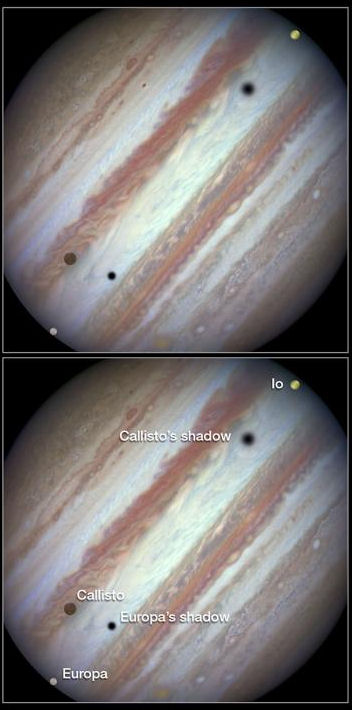5 February 2015
Rare spectacle of three moons transiting Jupiter's face captured by Hubble
by Will Parker

New images from the Hubble Space Telescope have captured a rare occurrence as three of the Jupiter's largest moons - Europa, Callisto and Io - parade across the giant gas planet's banded face.
There are four Galilean satellites - Io, Europa, Ganymede, and Callisto; named after the 17th century scientist Galileo Galilei who discovered them. They complete orbits around Jupiter ranging from two to seventeen days in duration. The moons can commonly be seen transiting the face of Jupiter and casting shadows onto its layers of cloud. However, seeing three of them transiting the face of Jupiter at the same time is rare, occurring only once or twice a decade.
Missing from this sequence is the Galilean moon Ganymede which was outside Hubble's field of view.
The moons of Jupiter have very distinctive colours. The smooth icy surface of Europa is yellow-white, the volcanic sulfur surface of Io is orange and the surface of Callisto, which is one of the oldest and most cratered surfaces known in the Solar System, is a brownish color.
The images were taken with Hubble's Wide Field Camera 3 in visible light on the 23rd of January, 2015. Whilst Hubble captures these moons in great clarity they can also be seen with a small telescope or even a pair of binoculars.
Related:
Discuss this article in our forum
Water vapor seen gushing from Europa
Lost: one giant planet
Mysterious Ice Domes Hint At Life On Europa
Source: Hubble Information Center
